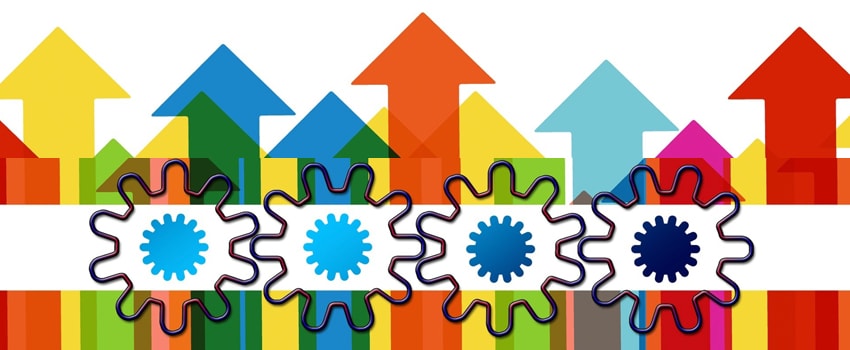
IT Asset Management Has Changed But Has Yours?
While IT asset management (ITAM) practices have been around for decades, much has changed related to the management of IT assets. As we’re in the IT space, the available technologies for ITAM becoming “smarter,” thanks to artificial intelligence (AI), is probably the first thing that comes to mind. Maybe also that IT assets have changed too, with third-party services also requiring ITAM’s attention as much as hardware and software. Both are valid “technology-based” reasons for your corporate ITAM capabilities to change. But what about the business-related drivers for change?
Your business might now be expecting far more from its #ITAM capabilities says @Joe_the_IT_Guy, especially because so much changed with the global pandemic. Here he looks at 3 potential #ITAM change drivers. Share on XWhile the need for better financial stewardship related to asset use and expenditure is still likely valid, as is the need to remain compliant, especially in software license terms. Your business might now be expecting far more from its ITAM capabilities, especially because so much changed with the global pandemic.
To help, this blog focuses on three potential ITAM change drivers related to:
- The need for the optimization of operations and outcomes (both in terms of digital workflows and asset expenditure)
- The effect remote and then hybrid working has had on IT assets and their management
- The impact of employee experience on asset management capabilities.
The key aspects of each of these are covered below.
1- The need for ITAM optimization
Any ITAM activity likely benefits your organization. But is it currently maximizing the available benefits? As with the business-level “profit = sales – costs” equation, the net benefits of ITAM equate to the ITAM savings made less the cost of achieving the benefits. This “equation” means that ITAM is optimized when both the benefits and costs are optimized, i.e. the outcomes and operations.
Here @Joe_the_IT_Guy looks at the need for the optimization of operations & outcomes (both in terms of digital workflows & asset expenditure) as a driver for #ITAM change. Share on XThis optimization is ultimately up to what your organization needs to achieve (with ITAM). However, for most organizations, this will include revisiting the scope of what “assets” are, the ability to monitor and manage them effectively (and the associated risks), and reducing asset wastage. Each of these areas is touched on below:
- ITAM scope. While ITAM has traditionally focused on hardware and software assets, two other key asset types also need to be considered – third-party services (and the associated payment subscriptions) and corporate data.
- ITAM practices. In some ways, this is another perspective of “ITAM scope,” i.e. the ITAM activities undertaken. However, this is not just what’s done; it’s also how things are done and what they achieve. For example, the addition of new ITAM best practices and intelligent automation for both workflow and analytical improvement and risk reduction.
- ITAM wastage. This need is the extension of the previous two bullets, with ITAM capabilities laser-focused on ensuring that assets are employed to the best business advantage. If assets are unused or underused, take the necessary actions to improve their business value or prevent further related expenditure.
2 – The effect of remote working on ITAM practices and policies
While the above can be considered as changes to ITAM practices related to “better, faster, cheaper” ITAM operations and outcomes, there are also necessary changes to the ITAM ecosystem caused by business and employee decisions on the assets best suited to getting work done.
The effect remote & then hybrid working has had on IT assets and their management is a driver for #ITAM change says @Joe_the_IT_Guy. Share on XFirst, there are the ITAM capabilities required to manage the existing asset estate in the context of new ways of working (whether employees are remote or hybrid-working). There are likely synergies to be had with the IT support remote capabilities – from knowing what’s out there to being able to protect the corporate assets from misuse.
Second, there’s a need to assess whether ITAM policies have changed in line with ways of working. This need includes the ITAM policies related to provisioning (including peripherals) and refresh periods. The increased use of personal IT assets (devices, applications, and cloud services) must also be factored into the ITAM-focus mix. For example, where an employee is using an unlicensed application for business purposes.
3 – The impact of employee experience on ITAM
While this factor could be considered part of driver #2 above, it’s worth separating it to ensure that the focus of ITAM continues to be aligned with business needs.
While IT assets have traditionally been seen as business enablers and hopefully managed as such, the growing industry interest in employee experience, and the value brought through experience data and insight, necessitates that every aspect of IT needs to be reconsidered through an experience lens. ITAM isn’t exempt from this.
In this blog @Joe_the_IT_Guy discusses why you need to consider the impact of employee experience on asset management capabilities #EX #ITAM Share on XThere are a variety of employee touchpoints across the asset lifecycle, but some will likely be more influential on the delivered employee experience than others. We can guess what these “moments of truth” are, but ultimately, they’ll need to be investigated in your organization through engagement with the potentially affected employees. This need relates to ITAM policies and practices through to the suitability of the IT assets themselves.
In the future, will your organization’s ITAM capabilities still be about IT assets, and their management, or will it be focused on business AND employee enablement? It’s interesting how taking a different perspective on what we do, and achieve through what we do, can make a difference to our traditional ITAM practices.
What do you think? Please let me know in the comments.






